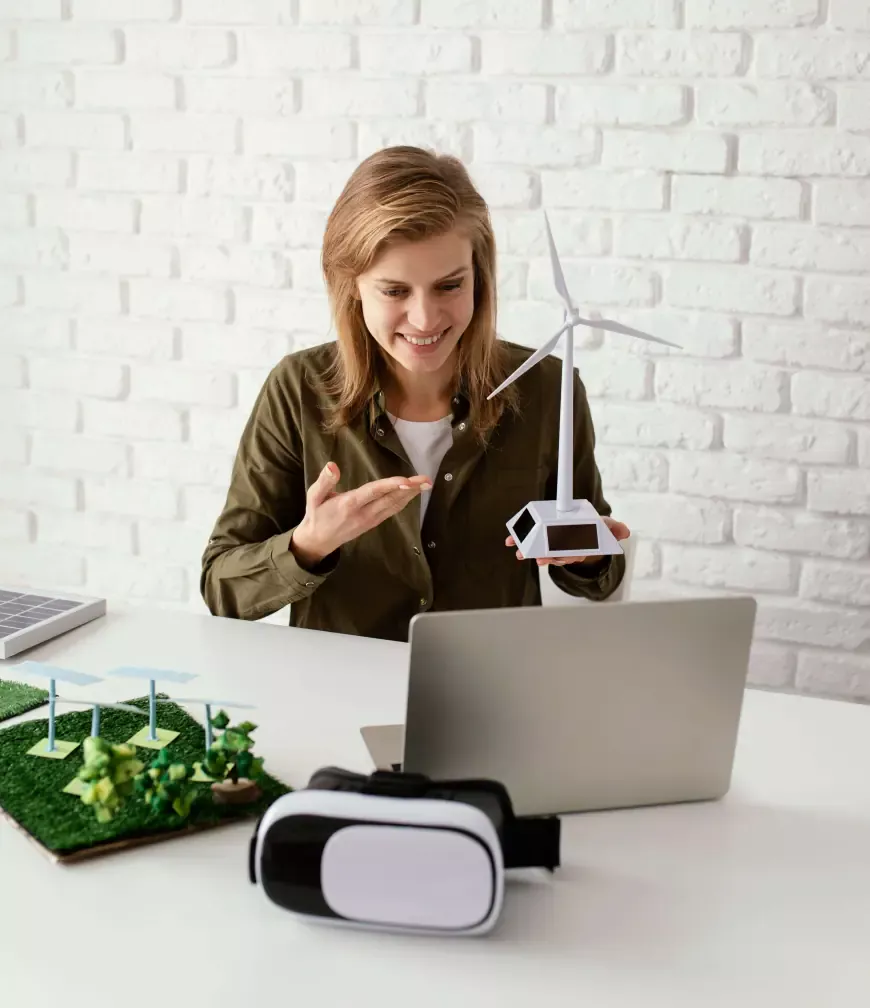Highlighting Eco-Friendly Technologies and Their role in Promoting Sustainability
Discover innovative eco-friendly technologies and their crucial role in promoting sustainability. Learn how green solutions drive a cleaner, greener future for all.

"We do not inherit the earth from our ancestors, we borrow it from our children." No one seems to know the origin of this saying, but it is the most thoughtful and poignant quotation about the environment. It is our responsibility to leave a world for our children that gives them hope, which is not a chaotic and dangerous place.
Just look at the recent wildfires in California. The fires' scale was unprecedented, ravaging some of the most posh neighborhoods on the planet. You only saw the videos of those horrific events, but someday it could be you who is holding the camera as an environmental catastrophe unfolds before your eyes.
Therefore, it is imperative for us to do something about climate change now. One major way of mitigating that is the push towards green and eco-friendly technologies.
We are making great strides in groundbreaking technologies, such as artificial intelligence (AI), machine learning solutions, AR/VR, and blockchain. But that is not enough; we need to utilize these technologies with minimal harm to our environment.
In this blog, we will explore eco-friendly technologies that you can adopt to add your part in securing a better future.
What are Eco-Friendly Technologies?
Eco-friendly tech, or more commonly known as green tech, is an umbrella term that means the use of science and technology to reduce human impact on the environment. It involves creating products or services that are environmentally friendly.
Eco-friendly products minimize the environmental impact of human activities. These products use innovative methods to reduce their carbon footprint during development, manufacturing, delivery, and finally disposal.
Here are the essential features that make any technology eco-friendly:
1. Renewable Energy
Renewable energy resources are the core element of green technologies. Solar, wind, hydropower, and geothermal energy are all examples of renewable energy resources that continuously replenish and don’t deplete over time.
Renewable energy is more sustainable and environmentally friendly than fossil fuels.
2. Eco-Friendly Manufacturing
Green technology emphasizes adopting eco-friendly practices during manufacturing processes. Sustainable manufacturing involves reducing consumption, minimizing waste, and finding innovative ways to save energy during the industrial design process.
3. Sustainable Transportation
The logistics involved in the supply chain of technological products are a major contributor to carbon emissions. Just as CMS development services regulate the working of supply chains, green tech regulates the environmental impact of supply chains by reducing the carbon footprint of transportation and logistics.
4. Recycling
Eco-friendly technologies must be recyclable as much as possible. If a technology requires constant raw material extraction, it causes more energy consumption, deforestation, and pollution. For example, plastic has long been a bane to the environment because it is not recyclable.
Recyclable products lower carbon emissions and waste associated with production and disposal.
5. Energy Efficiency
Green technology uses energy efficient methods in different sectors, including industrial product design, consumer appliances, and transportation.
For example, IoT companies are working on smart technologies that use minimum energy for performing their routine tasks efficiently.
Exploring Eco-Friendly Technologies for a Sustainable Future
Here are some of the most promising eco-friendly technologies in 2025:
1. Green Cloud
Green cloud is the term for making cloud computing more eco-friendly. The term itself is part of the broader movement to reduce the environmental impact of IT technologies. Managed cloud services are now working to provide scalable and cost-effective cloud solutions while meeting their goals of sustainability.
They are achieving that in two ways. Firstly, by developing eco-friendly hardware for data centers that host cloud resources. Green data centers use less energy for cloud infrastructure management.
Secondly, promoting sustainable programming practices in cloud application development. Microservces for cloud is a major shift because of this reason, which creates cloud applications that are easy to manage and waste fewer resources.
2. IoT for Sustainability
Internet of Things (IoT) is helping in tackling some of the most persistent environmental challenges. IoT solutions are improving energy efficiency and promoting a greener future for the world.
For example, industrial IoT solutions are used to monitor carbon emissions and harmful waste from factories. Moreover, IoT devices such as smart sensors are optimizing agricultural output by ensuring water management and reducing food wastage.
Finally, light pollution is a major concern in the sustainability of our cities. IoT services are developing infrastructure that adjusts their light intensity in real-time, which will conserve energy.
3. AI-Based Green Solutions
AI-based solutions are a significant step towards sustainable technologies. AI development services are utilizing the learning and predictive power of AI/ML models to identify environmental patterns. This would be a monumental progress as it would allow us to predict and prepare for natural disasters, such as floods, droughts, and storms.
Conclusion
Technology should make our lives better, not just faster or smarter. Unfortunately, this was not the case with many inventions of the past that didn’t have the desired positive effect on the planet. However, we cannot afford to repeat the mistakes of the past.
We are the first ones to experience the effects of climate change; therefore, it is our responsibility to ensure we leave a better world for future generations.
This means that we can’t just rely on governments for a greener, sustainable future. Start exploring eco-friendly technologies that you can incorporate in your daily life. Share them with others, what you do makes a difference. It is up to you what kind of difference you want to make.
What's Your Reaction?
 Like
0
Like
0
 Dislike
0
Dislike
0
 Love
0
Love
0
 Funny
0
Funny
0
 Angry
0
Angry
0
 Sad
0
Sad
0
 Wow
0
Wow
0










































